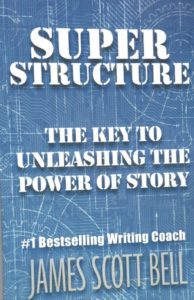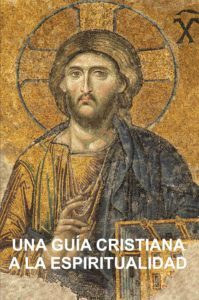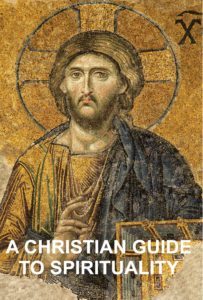Stephen W. Hiemstra's Blog, page 125
March 21, 2021
Prayer Day 18
By Stephen W. Hiemstra
Loving Father. Beloved Son. Forgiving Spirit.
We praise you for your love and forgiveness.
Redeem us from our sin; empower our lives with new meaning.
In the power of your Holy Spirit, grant us new status as children of God and allow us to enter your work of reconciliation.
In Jesus’ precious name, Amen.
Prayer Day 18
Also see:
Believer’s Prayer
Other ways to engage online:
Author site: http://www.StephenWHiemstra.net
Purchase Book: http://www.T2Pneuma.com
Newsletter: http://bit.ly/HailMary21
The post Prayer Day 18 appeared first on T2Pneuma.net.
Oración Dia 18
Por Stephen W. Hiemstra
Padre Amoroso, Hijo Amado, Espíritu de Perdón.
Te alabamos por tu amor y perdón.
Redima nos de nuestros pecados; empodera nuestras vidas con significados nuevos.
En el poder de tu Espirita Santo, anime nos un estado nuevo como hijos y hijas de Dios y permite nos a entrar tu obra de reconciliación.
En el precioso nombre de Jesús oramos, Amén.
Oración Dia 18
Ver también:
Prefacio de La Guía Cristiana a la Espiritualidad
Otras formas de participar en línea:
Sitio del autor: http://www.StephenWHiemstra.net
Comprar Libro: http://www.T2Pneuma.com
Boletín informativo: http://bit.ly/HailMary21
The post Oración Dia 18 appeared first on T2Pneuma.net.
Gebetstag 18
Von Stephen W. Hiemstra
Liebender Vater, Geliebter Sohn, Vergebend Geist.
Wir preisen dich für deine Liebe und Vergebung.
Rette uns von unserer Sünde; Stärke unser Leben mit neuer Bedeutung.
In der Kraft deines Heilig Geist, gäbe uns neue Status als Gottes Kinder und permite uns zu eintriter deines Werk von Versöhnungen.
Gewähre uns in der Kraft deines Heiligen Geistes einen neuen Status als Kinder Gottes und lasse uns in dein Versöhnungswerk eintreten.
In Jesu kostbarem Namen, Amen.
Gebetstag 18
Siehe auch:
Einleitung auf Ein Christlicher Leitfaden zur Spiritualität
Andere Möglichkeiten, sich online zu engagieren:
Autoren Seite: http://www.StephenWHiemstra.net
Herausgeber Seite: http://www.T2Pneuma.com
Mitteilungsblatt: http://bit.ly/HailMary21
The post Gebetstag 18 appeared first on T2Pneuma.net.
March 19, 2021
Capital Christian Writers Fellowship Facebook Party – You are Invited!

Come join me for the Capital Christian Writers Fellowship Facebook party at 5:00 p.m. on Friday, March 19, 2021. Participants get a chance to win a free copy of my book, Simple Faith, and pose questions. Click on the above link to join.
More generally, the party features Christian authors from 4:00 to 9:00 p.m. in half-hour segments. Each author will be offering a chance to win their book to participants.
If you have never attended a Facebook party before, you are in for a real treat.
Capital Christian Writers Fellowship Facebook Party – You are Invited!
The post Capital Christian Writers Fellowship Facebook Party – You are Invited! appeared first on T2Pneuma.net.
Forgiveness of Sins
By Stephen W. Hiemstra
Why is forgiveness a sign of God’s presence?
Scripture attests to God’s overwhelming love for us and willingness to forgive our sins. Even after God discovers the sin of Adam and Eve, he does not immediately impose a death sentence on them, as previously warned; instead, he outfits them with clothes like a mother preparing her first grader for school Gen 2:17; Gen 3:21. God imposed a consequence for sin on Adam and Eve, but also left them with a “positive conclusion” so that they might learn from their mistake and not be embittered (Turansky and Miller (2013, 130–131).. Similarly after Cain murders Abel, God offers Cain grace, protecting him from revenge (Gen 4:15).
The link between God’s love and forgiveness allows the psalmist to write:
Bless the LORD, O my soul, and forget not all his benefits, who forgives all your iniquity, who heals all your diseases, who redeems your life from the pit, who crowns you with steadfast love and mercy. (Ps 103:2-4)
So if God’s forgiveness was already well-attested in the Old Testament, why did Jesus need to die on the cross?
Part of the answer is to observe that God’s forgiveness of Adam, Eve, and Cain was providentially incomplete. All three were still cursed; all three still left the presence of God. Christ’s work on the cross was comprehensive, a re-creation event, as the Apostle Paul writes:
Therefore, if anyone is in Christ, he is a new creation. The old has passed away; behold, the new has come. All this is from God, who through Christ reconciled us to himself and gave us the ministry of reconciliation; that is, in Christ God was reconciling the world to himself, not counting their trespasses against them, and entrusting to us the message of reconciliation. (2 Cor 5:17-19)
Christ reconciled us with God so we should reconcile with one another. With Adam, Eve, and Cain, none of this happens.
Some psychologists look at forgiveness as a reframing event. Reframing occurs when new meaning is attached to a negative experience. For example, psychoanalyst Victor Frankl, when confined to a concentration camp during the Second World War, focused his mind on preparing the lectures that he would give after the war on his camp experience. In reframing his persecution, Frankl was able to survive the camp when others gave up hope and died (Rosen 1982, 141). Reframing falls short of forgiveness because it focuses solely on the individual, neglecting the relationship among individuals and with God.
When God forgives our sin, in a sense we reframe our self-image from rebel to child of God. The greater the sin forgiven, the deeper the transformation enabled. Forgiveness releases us from death row condemnation and allows us to be reconciled with God, those we sin against, and all of creation. When we then forgive others, we become ambassadors for Christ in this magnificent reconciliation project (2 Cor 5:20).
References
Rosen, Sidney [Editor]. 1982. My Voice will Go With You: The Teaching Tales of Milton H. Erickson. New York: W.W. Norton and Company.
Turansky, Scott and Joanne Miller. 2013. The Christian Parenting Handbook: 50 Heart-Based Strategies for All the Stages of Your Child’s Life. Nashville: Thomas Nelson.
Forgiveness of Sins
Also see:
Preface to A Christian Guide to Spirituality
Other ways to engage online:
Author site: http://www.StephenWHiemstra.net
Purchase Book: http://www.T2Pneuma.com
Newsletter: http://bit.ly/HailMary21
The post Forgiveness of Sins appeared first on T2Pneuma.net.
Perdón de Pecados
Por Stephen W. Hiemstra
¿Por qué es perdón de pecados un signo de la presencias de Dios?
La escritura atestigua del amor abrumadora de Dios para nosotros y su disposición a perdonar nuestros pecados. Incluso después Dios descubrí el pecado de Adán y Eva, no les imponía inmediatamente una pena de muerte como les dijo antes; en su lugar, les equipa con ropas como una madre preparando su primer grado para la escuelaGen 2:17; Gen 3:21. Dios ha impuesto una consecuencia por el pecado sobre Adán y Eva, pero también les salia con “conclusión positiva” en la esperanza que deberán aprender de su error y no ser amargado (Turansky and Miller (2013, 130–131).. Del mismo modo después Caín muerta Abel, Dios ofrece Caín gracia y protegiéndolo de la venganza (Gen 4:15).
La conección entre el amor de Dios y perdón permite la salmista a escribir:
Bendice, alma mía, al SEÑOR, Y no olvides ninguno de Sus beneficios. El es el que perdona todas tus iniquidades, El que sana todas tus enfermedades; El que rescata de la fosa tu vida, El que te corona de bondad y compasión; (Psa 103:2-4 NBH)
¿Entonces si el perdón de Dios esta buen atestiguado en el Testamento Antiguo, por qué se necesita Jesús a morir por la cruz?
Parte de la respuesta es a observar que la perdón de Dios de Adán, Eva, y Caín era incompleta providencialmente. Toda tres eran todavía mal dicho; toda tres eran todavía apartado de la presencia de Dios. La obra de Cristo en la cruz era comprensiva, un evento de nueva creación, como el Apóstol Pablo escribe:
De modo que si alguno está en Cristo, nueva criatura (nueva creación) es; las cosas viejas pasaron, ahora han sido hechas nuevas. Y todo esto procede de Dios, quien nos reconcilió con El mismo por medio de Cristo, y nos dio el ministerio de la reconciliación; (2 Cor 5:17-18 NBH)
Cristo nos reconcilio con Dios lo tanto que debemos reconciliar entre si. Con Adán, Eva, y Caín, nada de esto sucede.
Algunos psicólogos miran el perdón como un evento replanteo. Replanteamiento sucede cuando un significado nuevo se une a un evento negativo. Por ejemplo, psicoanalista Victor Frankl, cuando confinado a un campo de concentración durante la Segunda Guerra Mundial, centró su mente en preparar la lecciones que iba a dar después la guerra sobre su experiencia de campamento. Por razón de replanteamiento de su persecución, Frankl fue capaz de sobrevivir el campamento cuando otros abandonaron la esperanza y muerto (Rosen 1982, 141). El replanteamiento no alcanza el perdón porque el enfoque es exclusivamente en la individual, dejando de lado la relación entre las individuales y con Dios.
Cuando Dios perdona nuestros pecados, en una sentido replanteamos nuestra propia imagen como un rebele a ser un hijo de Dios. Cuanto mayor sea el pecado perdonado, mayor será la transformación habilitado. La perdón libera nos de la pena de muerte y permita nos no solo a ser reconciliado con Dios, pero también con los que contra pecamos y con toda la creación. Entonces cuando nosotros perdonamos a los demás, nos convertimos en embajadores de Cristo en esta magnificente proyecto de reconciliación (2 Cor 5:20).
Referencias
Rosen, Sidney [Editor]. 1982. My Voice will Go With You: The Teaching Tales of Milton H. Erickson. New York: W.W. Norton and Company.
Turansky, Scott and Joanne Miller. 2013. The Christian Parenting Handbook: 50 Heart-Based Strategies for All the Stages of Your Child’s Life. Nashville: Thomas Nelson.
Perdón de Pecados
Ver también:
Prefacio de La Guía Cristiana a la Espiritualidad
Otras formas de participar en línea:
Sitio del autor: http://www.StephenWHiemstra.net
Comprar Libro: http://www.T2Pneuma.com
Boletín informativo: http://bit.ly/HailMary21
The post Perdón de Pecados appeared first on T2Pneuma.net.
Vergebung der Sünden
Von Stephen W. Hiemstra
Warum ist Vergebung ein Zeichen der Gegenwart Gottes?
Die Schrift bestätigt Gottes überwältigende Liebe zu uns und die Bereitschaft, unsere Sünden zu vergeben. Selbst nachdem Gott die Sünde von Adam und Eva entdeckt hat, verhängt er ihnen nicht sofort ein Todesurteil, wie zuvor gewarnt; Stattdessen stattet er ihnen mit Kleidern aus wie eine Mutter, die ihre Erstklässlerin auf die Schule vorbereitet (Gen 2:17; 3:21). Gott hat Adam und Eva eine Konsequenz für die Sünde auferlegt, ihnen aber auch eine “positive Schlussfolgerung“ hinterlassen, damit sie aus ihrem Fehler lernen und nicht verbittert werden können (Turansky and Miller 2013, 130–131). Ähnlicheweise, bietet Gott Kain Gnade an, nachdem Kain Abel ermordet hat, und schützt ihn vor Rache (Gen 4:15).
Die Verbindung zwischen Gottes Liebe und Vergebung ermöglicht es dem Psalmisten zu schreiben:
Lobe den HERRN, meine Seele, und vergiss nicht, was er dir Gutes getan hat: der dir alle deine Sünde vergibt und heilet alle deine Gebrechen, der dein Leben vom Verderben erlöst, der dich krönet mit Gnade und Barmherzigkeit, (Ps 103:2-4)
Wenn also Gottes Vergebung im Alten Testament bereits gut belegt war, warum musste Jesus dann am Kreuz sterben? Ein Teil der Antwort ist, könnte man beobachten, dass Gottes Vergebung für Adam, Eva und Kain vorsorglich unvollständig war. Alle drei waren immer noch verflucht; Alle drei verließen immer noch die Gegenwart Gottes. Das Werk Christi am Kreuz war vollständig, ein Ereignis der Neuschöpfung, wie der Apostel Paulus schreibt:
Darum: Ist jemand in Christus, so ist er eine neue Kreatur; das Alte ist vergangen, siehe, Neues ist geworden. Aber das alles ist von Gott, der uns mit sich selber versöhnt hat durch Christus und uns das Amt gegeben, das die Versöhnung predigt. Denn Gott war in Christus und versöhnte die Welt mit ihm selber und rechnete ihnen ihre Sünden nicht zu und hat unter uns aufgerichtet das Wort von der Versöhnung. (2 Cor 5:17-19)
Christus hat uns mit Gott versöhnt, damit wir uns miteinander versöhnen können. Bei Adam, Eva und Kain passiert nichts davon.
Einigen Psychologen betrachten Vergebung als ein neueframierend Ereignis. Das Neue Framieren erfolgt, wenn einer negativen Erfahrung eine neue Bedeutung beigemessen wird. Zum Beispiel konzentrierte sich der Psychoanalytiker Victor Frankl, der während des Zweiten Weltkriegs in einem Konzentrationslager eingesperrt war, darauf, die Vorträge vorzubereiten, die er nach dem Krieg über seine Lagererfahrung halten würde. Als Frankl seine Verfolgung neueframierte, konnte er das Lager überleben, als andere die Hoffnung aufgaben und starben (Rosen 1982, 141). Das Neue Framieren fallt kurz vonB Vergebung weil es konzentriert einheitlich auf der Individual, nicht verständigend der Beziehung zwischen Personen und mit Gott. Das Neue Framieren ist nicht Vergebung, weil es sich ausschließlich auf das Individuum konzentriert und die Beziehung zwischen Individuen und zu Gott vernachlässigt.
Wenn Gott unsere Sünde vergibt, neueframieren wir in gewissem Sinne unser Selbstbild vom Rebellen zum Kind Gottes. Je größer die vergebene Sünde ist, desto tiefer ist die Transformation. Vergebung befreit uns von der Verurteilung durch den Todestrakt und ermöglicht es uns, mit Gott, denen, gegen die wir sündigen, und der gesamten Schöpfung versöhnt zu werden. Wenn wir dann anderen vergeben, werden wir in diesem großartigen Versöhnungsprojekt Botschafter für Christus (2 Cor 5:20).
Verweise
Rosen, Sidney [Editor]. 1982. My Voice will Go With You: The Teaching Tales of Milton H. Erickson. New York: W.W. Norton and Company.
Turansky, Scott and Joanne Miller. 2013. The Christian Parenting Handbook: 50 Heart-Based Strategies for All the Stages of Your Child’s Life. Nashville: Thomas Nelson.
Vergebung der Sünden
Siehe auch:
Einleitung auf Ein Christlicher Leitfaden zur Spiritualität
Andere Möglichkeiten, sich online zu engagieren:
Autoren Seite: http://www.StephenWHiemstra.net
Herausgeber Seite: http://www.T2Pneuma.com
Mitteilungsblatt: http://bit.ly/HailMary21
The post Vergebung der Sünden appeared first on T2Pneuma.net.
March 17, 2021
Bell: The Emotional Journey is the Journey

James Scott Bell. 2015. Super Structure: The Key to Unleashing the Power of Story. Woodland Hills: Compendium Press
Review by Stephen W. Hiemstra
Words take new meaning in a new context.
I used to imagine a thought experiment in which a man sits of stool in a small room. Each of the four walls around have a different scene painted on them. One scene might be a beach; another a desert; a third a burning city; still another a dining-room table set with Thanksgiving dinner. Even though the man on the stool does not change, our perception of him does as the camera moves to picture him against a different backdrop.
As I gain more experience as a writer, my perception of writing books changes like the man being photographed on the stool. Points previously glossed over take on new meaning. So I keep reading new writing books.
IntroductionIn his book, Super Structure, James Scott Bell begins:
“In Write Your Novel from the Middle, I provide a brief outline of Super Structure. This book fleshes out each of those steps, and provides tips and techniques for incorporating them into your own writing.” (1)
After a few pages, he writes:
“I like to think of Super Structure as signpost scenes or beats … [Driving down the road] if you know what the next signpost is, you won’t get lost or drive off a cliff.” (7)
For Bell, some aspects of structure have to do with the plot, as with a three-act play (8-9), while other aspects have to do with emotional transitions, like Bell’s LOCK system or his fourteen sign posts.
Lead, Objective, Confrontation, and Knockout (LOCK)Bell’s LOCK acronym summarizes his sign posts: Lead, Objective, Confrontation, and Knockout. The writer must bind the reader with the lead character, make the character’s objective (a struggle with physical, professional, or psychological death) obvious, show the character overcoming an opposing force in confrontation, and resolve the conflict in a final knockout battle (19, 23).
Fourteen Sign PostsThe fourteen sign posts offer make the emotional journey in a novel more obvious:
Act 1
DisturbanceCare packageArgument against transformationTrouble brewingDoorway of no return #1Act 2
Kick in the shinsThe mirror momentPet the dogDoorway of no return #1Act 3
Mounting forcesLights outQ factorFinal battleTransformation (39-40).Of particular interest to me was his description of a care package. No villain, however villainous, is completely devoid of attachments. Showing that he cares about someone or something close to him (an existing relationship) is important to demonstrating that he is an emotionally complete individual and bonding the reader to him. A pet-the-dog moment reinforces this point, but with someone or something not so familiar (a new relationship). A pet-the-dog moment is one way, for example, to introduce a new character (78-79).
Explaining all of the allusions here is beyond the scope of this review. Needless to say, Bell does a good job of bringing in memorable movie scenes to illustrate his points. The term, pet-the-dog moment, arrives from a scene in a Dirty Harry movie where Cliff Eastwood’s character withdraws from a gun fight to pet a stray dog. It is a totally unexpected move on his part that shows his humanity—we learn that Callahan may hate criminals, but he is not totally heartless—he loves dogs. The scene also dials down the heat on what would otherwise be a fairly intense moment.
BackgroundOn his website, we read:
Jim has taught writing at Pepperdine University and at numerous writer’s conferences in the United States, Canada, Great Britain, Australia and New Zealand. He attended the University of California, Santa Barbara where he studied writing with Raymond Carver, and graduated with honors from the University of Southern California Law Center.
In addition to his writing books, he is known for writing thrillers, television appearances, and legal work.
AssessmentJames Scott Bell’s Super Structure is a helpful guide to writing a novel, particularly thrillers. His writing style is light and lively accented by his frequent allusion to scenes from well-known movies. As a longtime Bell fan, I found the book a helpful reminder of many of his points, my way of internalizing his writing method while picking up material unique to the book.
Footnoteshttps://www.jamesscottbell.com.
Bell: The Emotional Journey is the JourneyAlso See:Bell, James Scott. 2004. Plot and Structure: Techniques and Exercises for Crafting a Plot that Grips Readers from Start to Finish. Cincinnati: Writer’s Digest Books. (review)
Bell, James Scott. 2008. Revision & Self-Editing: Techniques for Transforming Your First Draft into a Finished Novel. Cincinnati: Writer’s Digest Books. (Review).
Bell, James Scott. 2009. The Art of War for Writers: Fiction Writing Strategies, Tactics, and Exercises. Cinninnati: Writers Digest Books (review).
Bell, James Scott. 2014. How to Write Dazzling Dialogue: The Fastest Way to Improve Any Manuscript. Woodland Hills, CA: Compendium Press. (review)
Bell, James Scott. 2019. The Last Fifty Pages: The Art and Craft of Unforgettable Endings. Woodland Hills, CA: Compendium Press. (review)
Books, Films, and MinistryOther ways to engage online:Author site: http://www.StephenWHiemstra.netPublisher site: http://www.T2Pneuma.com Newsletter: http://bit.ly/HailMary21
The post Bell: The Emotional Journey is the Journey appeared first on T2Pneuma.net.
Capital Christian Writers Fellowship Facebook Party – You are Invited!

Come join me for the Capital Christian Writers Fellowship Facebook party at 5:00 p.m. on Friday, March 19, 2021. Participants get a chance to win a free copy of my book, Simple Faith, and pose questions. Click on the above link to join.
More generally, the party features Christian authors from 4:00 to 9:00 p.m. in half-hour segments. Each author will be offering a chance to win their book to participants.
If you have never attended a Facebook party before, you are in for a real treat.
Capital Christian Writers Fellowship Facebook Party – You are Invited!
The post Capital Christian Writers Fellowship Facebook Party – You are Invited! appeared first on T2Pneuma.net.
March 16, 2021
Bell: The Emotional Journey is the Journey

James Scott Bell. 2015. Super Structure: The Key to Unleashing the Power of Story. Woodland Hills: Compendium Press
Review by Stephen W. Hiemstra
Words take new meaning in a new context.
I used to imagine a thought experiment in which a man sits of stool in a small room. Each of the four walls around have a different scene painted on them. One scene might be a beach; another a desert; a third a burning city; still another a dining-room table set with Thanksgiving dinner. Even though the man on the stool does not change, our perception of him does as the camera moves to picture him against a different backdrop.
As I gain more experience as a writer, my perception of writing books changes like the man being photographed on the stool. Points previously glossed over take on new meaning. So I keep reading new writing books.
IntroductionIn his book, Super Structure, James Scott Bell begins:
“In Write Your Novel from the Middle, I provide a brief outline of Super Structure. This book fleshes out each of those steps, and provides tips and techniques for incorporating them into your own writing.” (1)
After a few pages, he writes:
“I like to think of Super Structure as signpost scenes or beats … [Driving down the road] if you know what the next signpost is, you won’t get lost or drive off a cliff.” (7)
For Bell, some aspects of structure have to do with the plot, as with a three-act play (8-9), while other aspects have to do with emotional transitions, like Bell’s LOCK system or his fourteen sign posts.
Lead, Objective, Confrontation, and Knockout (LOCK)Bell’s LOCK acronym summarizes his sign posts: Lead, Objective, Confrontation, and Knockout. The writer must bind the reader with the lead character, make the character’s objective (a struggle with physical, professional, or psychological death) obvious, show the character overcoming an opposing force in confrontation, and resolve the conflict in a final knockout battle (19, 23).
Fourteen Sign PostsThe fourteen sign posts offer make the emotional journey in a novel more obvious:
Act 1
DisturbanceCare packageArgument against transformationTrouble brewingDoorway of no return #1Act 2
Kick in the shinsThe mirror momentPet the dogDoorway of no return #1Act 3
Mounting forcesLights outQ factorFinal battleTransformation (39-40).Of particular interest to me was his description of a care package. No villain, however villainous, is completely devoid of attachments. Showing that he cares about someone or something close to him (an existing relationship) is important to demonstrating that he is an emotionally complete individual and bonding the reader to him. A pet-the-dog moment reinforces this point, but with someone or something not so familiar (a new relationship). A pet-the-dog moment is one way, for example, to introduce a new character (78-79).
Explaining all of the allusions here is beyond the scope of this review. Needless to say, Bell does a good job of bringing in memorable movie scenes to illustrate his points. The term, pet-the-dog moment, arrives from a scene in a Dirty Harry movie where Cliff Eastwood’s character withdraws from a gun fight to pet a stray dog. It is a totally unexpected move on his part that shows his humanity—we learn that Callahan may hate criminals, but he is not totally heartless—he loves dogs. The scene also dials down the heat on what would otherwise be a fairly intense moment.
BackgroundOn his website, we read:
Jim has taught writing at Pepperdine University and at numerous writer’s conferences in the United States, Canada, Great Britain, Australia and New Zealand. He attended the University of California, Santa Barbara where he studied writing with Raymond Carver, and graduated with honors from the University of Southern California Law Center.
In addition to his writing books, he is known for writing thrillers, television appearances, and legal work.
AssessmentJames Scott Bell’s Super Structure is a helpful guide to writing a novel, particularly thrillers. His writing style is light and lively accented by his frequent allusion to scenes from well-known movies. As a longtime Bell fan, I found the book a helpful reminder of many of his points, my way of internalizing his writing method while picking up material unique to the book.
Footnoteshttps://www.jamesscottbell.com.
Bell: The Emotional Journey is the JourneyAlso See:Bell, James Scott. 2004. Plot and Structure: Techniques and Exercises for Crafting a Plot that Grips Readers from Start to Finish. Cincinnati: Writer’s Digest Books. (review)
Bell, James Scott. 2008. Revision & Self-Editing: Techniques for Transforming Your First Draft into a Finished Novel. Cincinnati: Writer’s Digest Books. (Review).
Bell, James Scott. 2009. The Art of War for Writers: Fiction Writing Strategies, Tactics, and Exercises. Cinninnati: Writers Digest Books (review).
Bell, James Scott. 2014. How to Write Dazzling Dialogue: The Fastest Way to Improve Any Manuscript. Woodland Hills, CA: Compendium Press. (review)
Bell, James Scott. 2019. The Last Fifty Pages: The Art and Craft of Unforgettable Endings. Woodland Hills, CA: Compendium Press. (review)
Books, Films, and MinistryOther ways to engage online:Author site: http://www.StephenWHiemstra.netPublisher site: http://www.T2Pneuma.com Newsletter: http://bit.ly/HailMary21
The post Bell: The Emotional Journey is the Journey appeared first on T2Pneuma.net.







